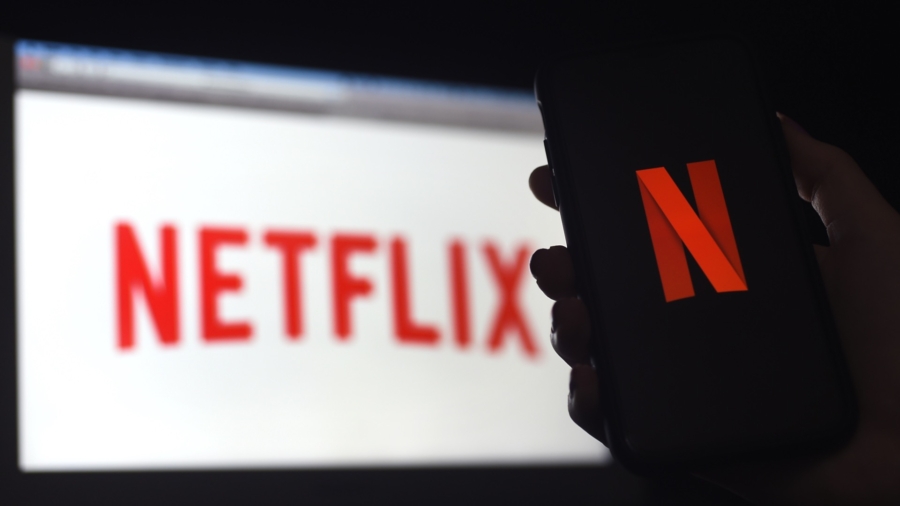After months of buildup, Netflix has officially outlined plans to commence its crackdown on account password sharing during the first quarter of 2023.
According to Netflix’s 2022 fourth quarter earnings letter to shareholders released on Jan. 19, of its current 231 million “paid memberships” worldwide, over 100 million share accounts with others, a practice “which undermines our long term ability to invest in and improve Netflix, as well as build our business.”
“We’ve always tried to make sharing within a member’s household easy, with features like profiles and multiple streams,” Netflix explained in an earlier April 2022 letter to shareholders, noting that “sharing likely helped fuel our growth by getting more people using and enjoying Netflix.”
“While these [features] have been very popular,” the company continued, “they’ve created confusion about when and how Netflix can be shared with other households.”
In an effort to begin its campaign to curtail password sharing, Netflix has recently updated its Help Center page for the United States, where it provides some basic details about how it plans to preserve account sharing within a household while discouraging outside usage.
Because Netflix operates in more than 190 countries worldwide, the policy may vary by location, but the bottom line is the streaming giant will be paying close attention to the devices that log into accounts.
Netflix defines a household as “people who live in the same location with the account owner.” Those who do not live in the “household” will need to get their own accounts.
The company uses information such as IP addresses, device IDs, and account activity to determine whether a device is connected to a household or not, the drop-down menu in the help center explains.
When someone signs into an account with a device “not associated” with the household, or the account is “accessed persistently” from outside the household, Netflix will send a link with a four-digit verification code to the primary account owner’s email address or phone. The user of the device requesting the code will have 15 minutes to enter it.
According to the Jan. 19 shareholder letter, “all members will be able to watch while traveling, whether on a TV or mobile device.” The help center’s claim is less confident, saying that the primary account holder (and other household members) “shouldn’t need to verify” devices when traveling.
Netflix’s Pilot Program to Latin America
To determine how to “best monetize sharing,” Netflix told its shareholders in April 2022 that the company began testing “different approaches” in three Latin American markets—Costa Rica, Chile, and Peru—in March 2022.
There, the company introduced a new “paid sharing” feature, an option members could opt into that allows primary account owners to share their subscriptions by adding “Extra Member sub accounts” for up to two people who don’t live with them. These sub accounts come with individual profiles, personalized recommendations, and logins/passwords for a small fee equivalent to about $3.
Another feature includes a pathway for these sub accounts to become full subscribers. An account owner can transfer a sub account’s profile to a new account, where the individual can then choose from four different plans while keeping previous viewing history and personalized recommendations in place, techcrunch.com reported.
Some of the specifics outlined for the pilot program appear much stricter than currently described on the U.S. help center version, causing some to wonder if similarly restrictive changes are coming soon for U.S. subscribers, Yahoo Finance reported.
For example, according to Netflix’s help center for Peru:
- Users are required to set up a “primary location” (or the main place where the account owner watches the streaming service).
- The primary location is set on a TV that’s connected to the household’s particular Wi-Fi network. All other devices signed into the account on that Wi-Fi network will then be associated with the primary location and be considered “trusted devices.” Only these “trusted devices” can access Netflix under the account.
- Devices other than “trusted devices” detected that are using the account or are located somewhere other than the primary location with different Wi-Fi networks may be blocked.
- If someone in the household “splits time between 2 or more places, only 1 will be considered” the account’s primary location.
- To maintain uninterrupted service, a “trusted device” must connect to the primary location’s Wi-Fi and watch “something every 31 days.”
Streaming market analyst Paul Erickson told restofworld.com that Netflix introduced the new, stricter policy outside “their huge markets” and, instead, piloted them in the small Latin American markets “so they don’t potentially suffer a large amount of subscriber goodwill lost.”
Erickson went on to predict that Netflix “will likely use their findings in these three small markets to dictate policy for password sharing globally, as the company looks to expand its password-sharing crackdown.”
According to the nonprofit, the crackdown has been largely unpopular in the test population, causing many to cancel their accounts.
Netflix indicated in its latest shareholder letter that the pilot’s policies could become a reality for Netflix users globally.
“We’ve worked hard to build additional new features that improve the Netflix experience,” the letter stated, conceding that the company expects a negative reaction in the short term due to the stricter policy initiative.
“As we work through this transition—and as some borrowers stop watching either because they don’t convert to extra members or full paying accounts—near term engagement … could be negatively impacted,” the letter explained.
“However, we believe the pattern will be similar to what we’ve seen in Latin America, with engagement growing over time as we continue to deliver a great slate of programming and borrowers sign-up for their own accounts,” Netflix concluded.

